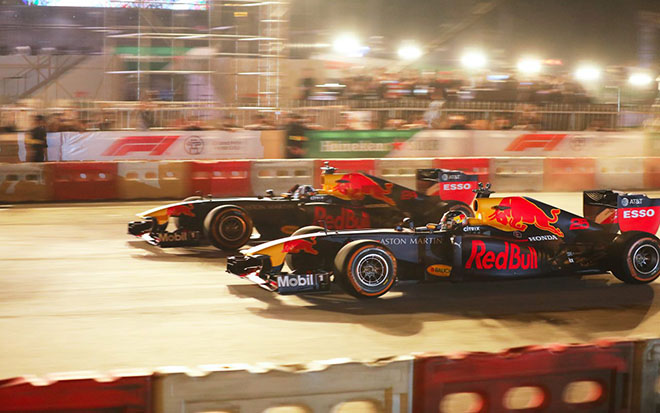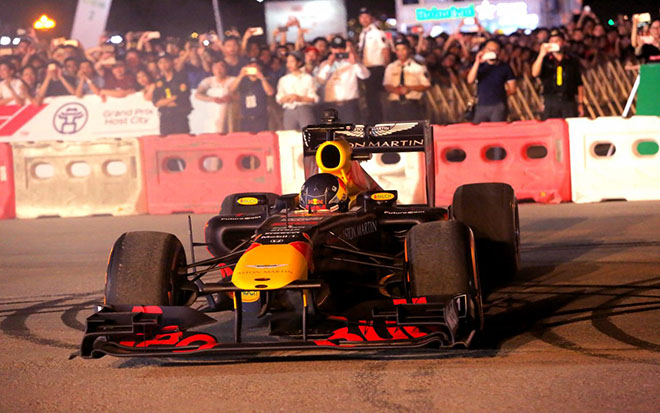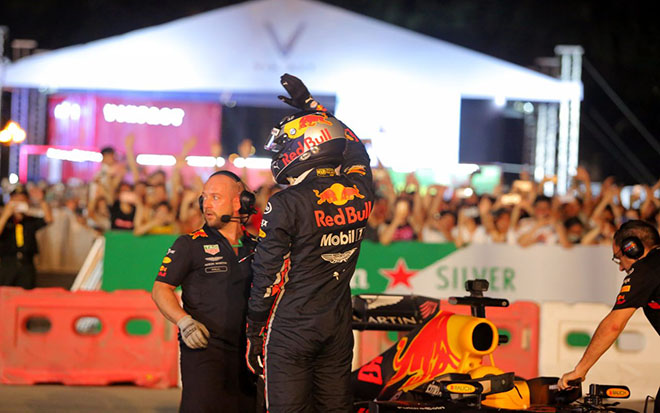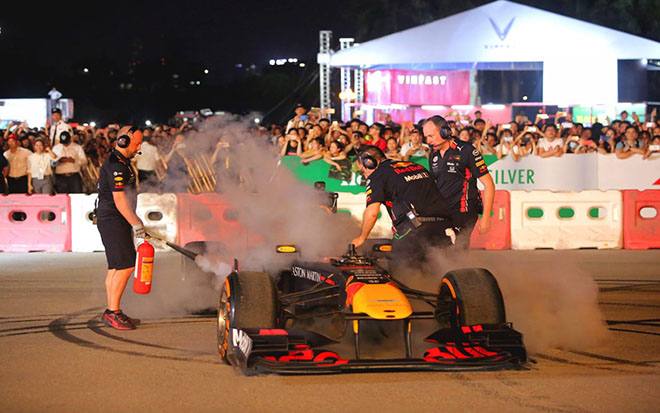F1 Race or the Grand Prix is among the most competitive and dangerous contest in the world. It also attracts a huge group of an international audience for mind-blowing performances on the circuit.
Everyone is excited about the upcoming race in April 2020. In meanwhile, let’s list out the most 20 amazing facts about Grand Prix and see how deep is your understanding about it.
 #1: The racing cars in F1 circuit are special models which can accelerate and decelerate in the blink of an eye. Approximately, they can go from 0 up to 100 mph and then back the beginning level within an incredibly short period of 4 seconds.
#1: The racing cars in F1 circuit are special models which can accelerate and decelerate in the blink of an eye. Approximately, they can go from 0 up to 100 mph and then back the beginning level within an incredibly short period of 4 seconds.
#2: Besides the amazing speeding up time, F1 cars are also precious possessions. The Federation of International Automobiles, the organizer of the Grand Prix, announced that the initial cost for a car to be qualified for the race is more than $7 million. That’s why only a few can afford to join the race as a competitor.
#3: As the racing speed is enormous, the brake discs are heated up to 1,000 degrees centigrade. This is equal to the temperature of the lava in an active volcano. The brakes have to built from a certain type of carbon fiber with a special design to stand the extreme heat and cool down the air.
#4: The engine of the F1 cars requires to be preheated. If not, you can’t even turn it on. Due to the high level of tolerance in a racing machine, racers need to increase the temperature of the engine so that it can be fired. That’s also the reason you couldn’t use the Formula 1 engine for your daily car.

#5: Another incredible figure of the racing cars in the Grand Prix circuit is that they can rev twice as much as normal models. Our four-wheel vehicles usually reach 6,000 rotation per minute (rpm). But the amazing Formula 1 can achieve up to 15,000 rpm up to 15,000 RPM.
#6: Despite the pretty simple exterior look, race cars are actually a complicated machine with more or less 80 thousand components. Each of them is put together in a customized system to ensure accuracy and avoid any defect.
#7: Needless to say, speed is of the utmost importance in a speed race. Not only the car needs to be the fastest, but the maintenance team has to be the quickest. And surprisingly most of the F1 crews spend around 3 seconds to change the tires and refuel the machine. The record of Grand Prix belongs to Masso’s pit crew who did everything in 1.92 seconds.
#8: The Grand Prix is a harsh race with no mercy. As a result, the lifetime of the car racing engine is extremely short though it is meticulously built. Car technicians state that F1 engine can only last less than ca five races. As it stands most of the wear and tear on the circuit, it’s quite an understandable number.

#9: Did you know that there is a weight limit for racing cars in F1? Without fuel, they must be more than 728 kilograms. This is calculated minimum number so that the cars’ gravity will be lower, providing better stability on the circuit. Unfortunately, most parts of an F1 car are from carbon fiber, which is super light. Therefore, most of the attendants couldn’t meet this requirement before 2014.
#10: F1 Race is a great opportunity for racers to lose weight as a person might reduce 4 kilograms in their weight after one race on average. This is due to the scorching temperature in the cockpit. It usually reaches a peak of 50 degrees. The physical influence of G-Force is also attributed to weight loss.
#11: In terms of drivers’ health, they not only lose weight but also consume a huge amount of water. The Telegraph, a prestigious magazine reveals that F1 cars contain approximately 1.5 liters of water connected to the helmet via a special tube. However, this is not enough to keep the drivers hydrated during a 2-hour race where they actually lose 3 liters.
#12: Human isn’t the sole thing that loses weight during the Grand Prix. Under the influence of the high speed, sudden braking, the F1 car tire can last over 74 miles while a typical road trip tire could easily manage 10,000 miles.

#13: Against popular belief, the Italian Monza circuit is no longer home-race of Ferrari. Even though it was named after the Ferrari founder, there is a new deal to be signed so that it can carry on another Grand Prix.
#14: The helmet which the F1 racers use is a masterpiece. It is both light and tough. It needs to pass an array of deformation and fragmentation tests to be able to enter the race. Endurable carbon fiber is the main material with several layers to increase safety while remaining the portability.
#15: “Hill” means success in Grand Prix language and coincidentally, there are three people with the name “Hill” have won the World Championship. The most well-known is Graham Hill, who was the winner twice.
#16: Due to the great speed, accidents seem to be inexplicable. The complete series of calamity involved 46 fatalities. The oldest driver was 50 while the youngest was just 20. It is such a tragedy, but the Federation also tightens the safety regulations to decrease the death possibility.

#17: Seldom do you see female racers to attend the Grand Prix. But one has made her way to score a point in the F1 circuit. She was successful in being qualified for 12 out of 17 races in her racing career.
#18: McLaren is a famous racing team, but they didn’t succeed much. The last time we saw McLaren rule the World Championship was in 2008, more than a decade ago. As a consequence, they got the title “Drought,” which means zero.
#19: The F1 official website advertises that their cars can do the upside-down racing thanks to the aerodynamic downforce. However, confirmation is out of the question because no driver is willing to undertake the experience. The fluid and fuel may probably cause a tragic accident.
#20: The Grand Prix is a competition for people of all ages. The youngest participant just celebrated his 17th birthday not long before becoming an F1 racer.
Travel Sense Asia is willing to bring you closer the most prestigious motor race on Earth by customized package for visitor to cherish the show and relish the beauty of Vietnam at the same time. Our travel experts will help you update the information and give you the best consultancy for your travel.
- Location: Hanoi, Vietnam
- Total Circuit: 5,565 km
- Date and time: The entire race takes place from April 3rd to April 5th.
The first day (April 3rd) will be a racing trial for the drivers to test the road, the second day (April 4th) is a qualifying race to decide the commencing position on the final round, and on Sunday, the 5th of April, all the racers will enter the main race to reach the podium stage. On the final day of the Hanoi Grand Prix 2020, the drivers will run 55 laps, equal to 306,075 km distance to find out the winner.
- Ticket Categories:
- General Admission: From 700,000 VND ($30) for one-day pass, no seat provided
- Grandstand: From 1,560,000 VND ($70) for one-day pass, seats in the stands
- Hospitality: From 19,740,000 VND ($860) for one-day pass, brilliant view with high-quality service
Contact us via email sale@travelsense.asia or hotline +84.899861177 (viber/whatsapp) to get more details





Comments